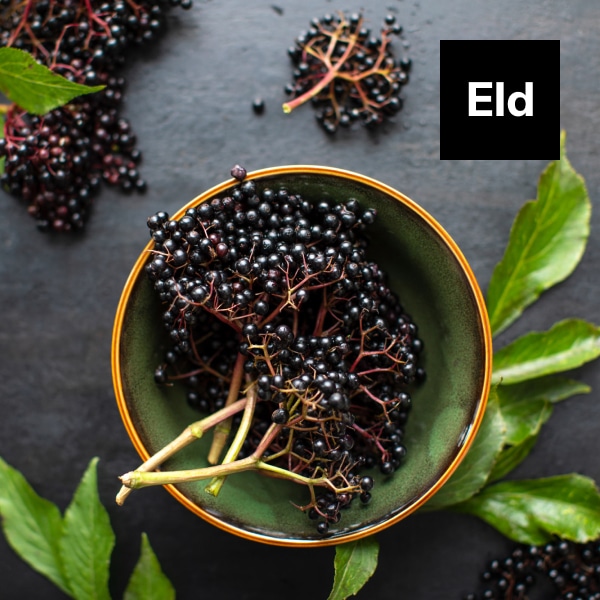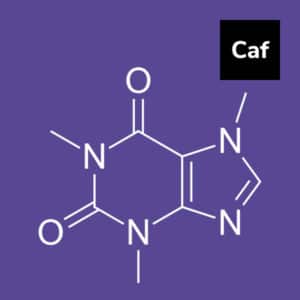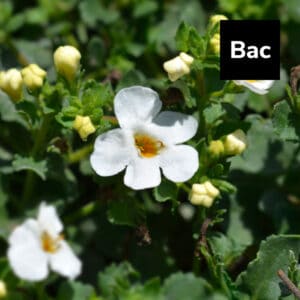Overview
In folk medicine and today, according to numerous scientific studies, the elderberry (Sambucus nigra L) is considered one of the world’s most healing plants. Elderberry extract offers a safe and effective treatment for influenza and the common cold.
Key Benefits
- Helps reduce length and severity of the common cold and flu
- Boosts the immune system
- Supports healthy blood sugar levels
- Provides antioxidant and anti-inflammatory support
History of Usage
Elderberry has been used since prehistoric times. Hippocrates affectionately referred to the elder tree as his “medicine chest.” American elderberries were used to treat fevers by the Cherokee and Iroquois people, and other tribes utilized them to treat rheumatism, diarrhea, and other gastrointestinal ailments. Today, elderberry is primarily used as a juice or syrup to treat the common cold as a mild laxative, diuretic, and diaphoretic
Elderberry has gained appeal in recent years among researchers and the public due to its reported antioxidant, anti-diabetic, anti-inflammatory, and immune-modulating properties.
Biochemistry
Elderberries are clustered dark violet-black drupes that owe their color to anthocyanins; a class of phenolic compounds that, together with flavonoids, are plentiful in elderberries and are regarded the fruits’ active ingredients. Elderberries, on the other hand, include a number of nutrients, including vitamins A, B2, B6, B9, C, and E; trace elements such as copper, zinc, and iron; and minerals such as potassium, calcium, and magnesium; as well as phytochemicals such as carotenoids, phytosterols, and polyphenols. Elderberries are a plausible option for beneficial nutritional and/or medicinal supplementation not only for respiratory, but also for cardiovascular and mental health, as a result of these additional elements and activities.
Sambucus nigra L has been proven to be antimicrobial against human respiratory bacterial infections (Streptococcus pyogenes and group C and G Streptococci, as well as the Gram-negative bacterium Branhamella catarrhalis), as well as inhibiting the propagation of human pathogenic influenza viruses.
Other components of the elder tree, such as the branches, twigs, leaves, roots, and seeds, are hazardous due to the presence of a kind of cyanide known as glycoside.
Recent Trends
Global elderberry market size is projected to grow at a CAGR of 5% with revenue of $149.45 million during the forecast period of 2021-2024. The year-over-year growth rate for 2021 is estimated at 4.16% by the end of 2024.
Elderberry lozenges have promoted the huge surge in the popularity of elderberry extracts. This may have been caused by the severe 2017-2018 influenza season and a 2016 clinical trial showing a reduction in symptoms of the common cold using elderberry. This positive sales trend has continued; and based on available data, 2020 was another record-breaking year for elderberry product sales, largely due to the COVID-19 pandemic, with an estimated growth of approximately 200% over 2019 sales.
Elderberry is found in lozenges, syrups, gummies, capsules, extracts, powders, sports drinks, and drink mix packets. Gummies are especially popular for children.
Precautions
- Women who are pregnant or breastfeeding should consult their healthcare physician prior to use.
- Individuals with an immunological illness should consult their healthcare professional before using elderberry, as it may stimulate the immune system and exacerbate symptoms associated with immune system diseases.
- There have been no reports of allergic reactions to goods containing elderberry extract from any clinical trial, cohort research, or government authority to yet.
References
- Porter RS, Bode RF. A Review of the Antiviral Properties of Black Elder (Sambucus nigra L.) Products. Phytother Res. 2017 Apr;31(4):533-554. doi: 10.1002/ptr.5782. Epub 2017 Feb 15. PMID: 28198157.
- Zakay-Rones Z, Thom E, Wollan T, Wadstein J. Randomized study of the efficacy and safety of oral elderberry extract in the treatment of influenza A and B virus infections. J Int Med Res. 2004 Mar-Apr;32(2):132-40. doi: 10.1177/147323000403200205. PMID: 15080016.
- Krawitz C., Mraheil M.A., Stein M., Imirzalioglu C., Domann E., Pleschka S., Hain T. Inhibitory activity of a standardized elderberry liquid extract against clinically-relevant human respiratory bacterial pathogens and influenza A and B viruses. BMC Complement. Altern. Med. 2011;11:182. doi: 10.1186/1472-6882-11-16.
- Tiralongo, E., Wee, S S., Lea, R.A. Elderberry Supplementation Reduces Cold Duration and Symptoms in Air-Travellers: A Randomized, Double-Blind Placebo-Controlled Clinical Trial. Nutrients. 2016 Apr; 8(4): 182.
- Netzel M., Strass G., Herbst M., Dietrich H., Bitsch R., Bitsch I., Frank T. The excretion and biological antioxidant activity of elderberry antioxidants in healthy humans. Food Res. Int. 2005;38:905–910. doi: 10.1016/j.foodres.2005.03.010.
- Gray AM, Abdel-Wahab YH, Flatt PR. The traditional plant treatment, Sambucus nigra (elder), exhibits insulin-like and insulin-releasing actions in vitro. J Nutr. 2000 Jan;130(1):15-20. doi: 10.1093/jn/130.1.15. PMID: 10613759.
- Mikulic-Petkovsek M, Ivancic A, Todorovic B, Veberic R, Stampar F. Fruit Phenolic Composition of Different Elderberry Species and Hybrids. J Food Sci. 2015 Oct;80(10):C2180-90. doi: 10.1111/1750-3841.13008. Epub 2015 Sep 26. PMID: 26409176.




